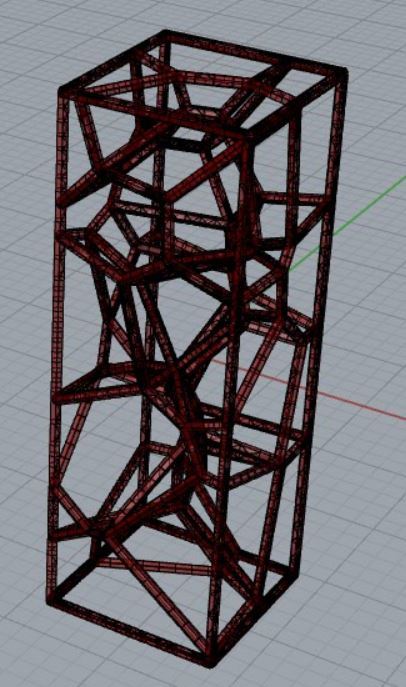lifepaper
Structural
- Mar 24, 2016
- 1
Dear all,
My current research involves the simulation of a foam structure (3d voronoi) under compression.

at this stage I have 2 problems,
1.In order to take torsion, bending, buckling etc into account, I intend to choose 'beam' as the section. However, even for a circular cross section, an orientation has to be assigned to each of the beam member. In the case of a foam, each member has a different orientation. Assigning orientations manually to each of the member seems impractical. So how to tackle this problem?
2. Once compression is applied, there will be severe deformation and consequently the self contact of the foam. How to simulate the interactions between these beams?
Thank you.
My current research involves the simulation of a foam structure (3d voronoi) under compression.

at this stage I have 2 problems,
1.In order to take torsion, bending, buckling etc into account, I intend to choose 'beam' as the section. However, even for a circular cross section, an orientation has to be assigned to each of the beam member. In the case of a foam, each member has a different orientation. Assigning orientations manually to each of the member seems impractical. So how to tackle this problem?
2. Once compression is applied, there will be severe deformation and consequently the self contact of the foam. How to simulate the interactions between these beams?
Thank you.
